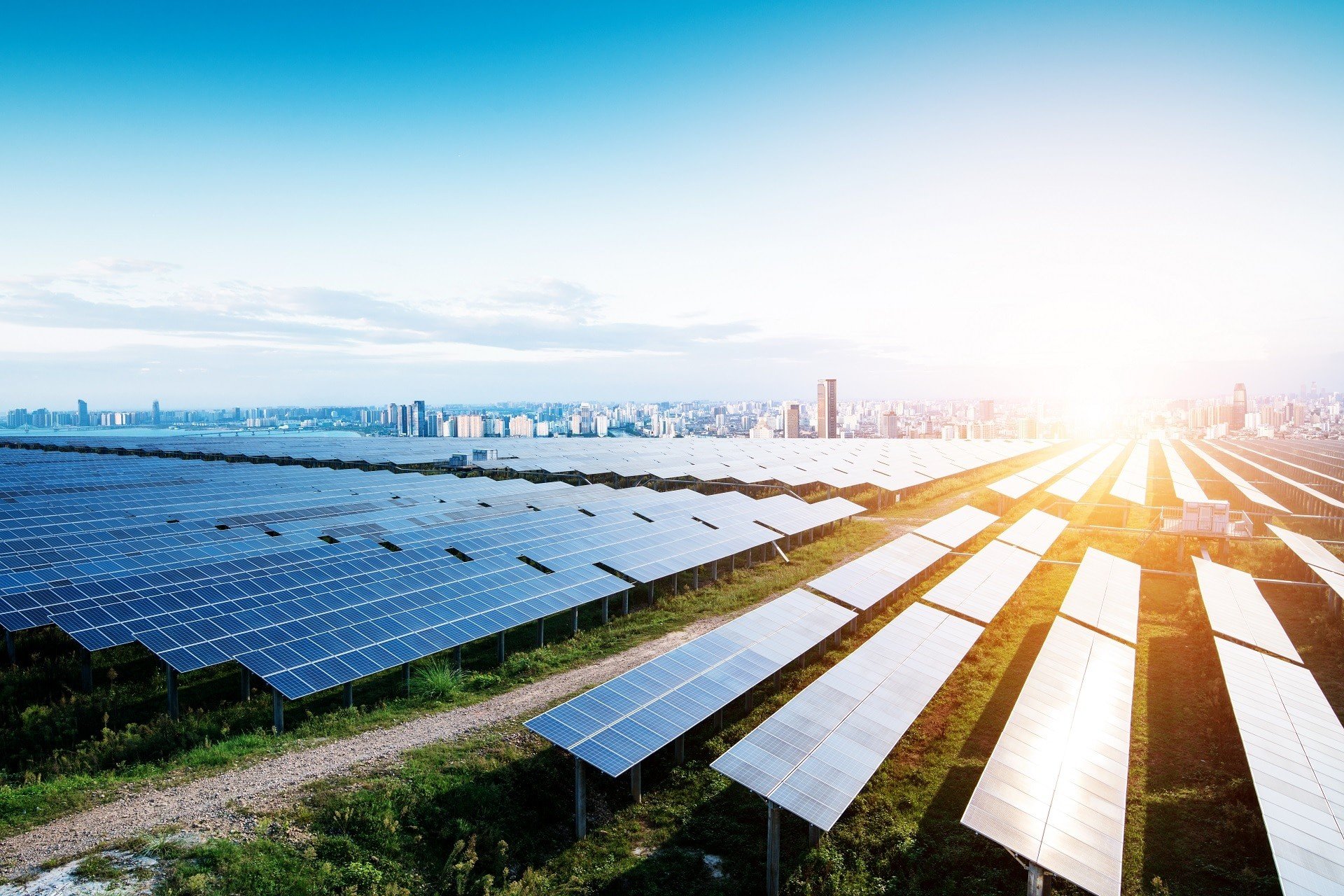-
Posts
2072 -
Joined
-
Last visited
Everything posted by André Mermoud
-

module layout - compared to near shade only
André Mermoud replied to deblynn's topic in Shadings and tracking
It is normal that the electrical loss computed from the Module layout is lower than the crude approximation of the option "Shadings according to strings", which gives an upper limit. This is the reason of the parameter "Fraction for electrical effect", which you can adjust using the Module layout information. The relative position of the tables when defining the strings for the Module layout have no effect on the shading calculation. This arrangement is only a convenient way for defining all the tables at a time. We have improved this view recently. Since version 6.32, when the Pmpp of the shaded string is below the minimum voltage VmppMin of the inverter, the calculation searches for the second maximum within the voltage range. -

View energy production for each inverter in the system
André Mermoud replied to kepstein's topic in Suggestions
For defining dummy trackers, you can specify a tracker with the same properties of your active one, and set the corresponding PVArray area to 0 (or almost 0) by defining the top and bottom inactive bands. But sorry, giving specific results for sub-systems is not possible in the present time. If we want to do that with some generality, this requires a rather big programming work for the specification of the required values, the accumulation during the simulation and the presentation of the results. If we define this just for one or two specific cases, we will of course inmmediately have requests for other cases... -

OND file: Inverter Power Consumption using "Auxiliary Consumptions"
André Mermoud replied to david.stone's topic in How-to
Sorry, this is indeed an error in the translation file. For the Spanish and the Italian languages we have the inversion - Ausiliari (ventilatori, altro…) <=> Consumi notturni - Auxiliares (ventiladores, otros …) <=> Consumo nocturno Thank you for pointing this out. Such an error is almost impossible to detect by our own means. This will be corrected in the version 6.33. -

PV Loss Due To Irradiance Level on PVsyst 6.3
André Mermoud replied to Rafael Santos's topic in Simulations
The objective of the model is to reproduce the real behavior of the PV module, in any irradiance and temperature conditions. Even when the Diode Ideality factor is below its "physical" value of one, nothing indicates that the model gives erroneous results. Please see my work about validations of the model on our web site: "Performance assessment of a simulation model for PV modules of any available technology", Mermoud, A. & Lejeune, T., 2010, I would be very glad if someone does an equivalent measurement with modern PV modules. -

OND file: Inverter Power Consumption using "Auxiliary Consumptions"
André Mermoud replied to david.stone's topic in How-to
The Auxiliary losses (formerly defined in the inverter's parameters) is now specified in the "Detailed losses" for the simulation. The values of the inverter are just used as default values for this parameter choice. The field "... from output power" means that the fans are switched on only when the inverter output power exceeds this value. -
Sorry, by contract with Meteotest (the provider of Meteonorm), the meteonorm values got in PVsyst cannot be exported nor modified.
-

How do i print the P50/P90 analysis in the report
André Mermoud replied to bvanvooren's topic in How-to
Yes, the PVGIS CMSAF data are an average over about the ten last years. -
I have never got nor seen this problem. Please send me your shading scene *.SHD (using "File" / "Save scene" in the menu of the 3D editor).
-
Please ask the manufacturer. I have not got a formal assessment of the duration of this increase of performance.
-

PV Loss Due To Irradiance Level on PVsyst 6.3
André Mermoud replied to Rafael Santos's topic in Simulations
The default values (mainly of Rserie) is adjusted for being as close as possible to the performances of modern PV modules. In the past (version 5), the default highly underestimated the low-light performances (based on a required gamma value of 1.30 or 1.35). This had been corrected for the version 6, where the required Gamma was reduced to 1.1 (on the basis of Sandia large database). But it appears now that this was not sufficient (at least for the recent modules), and I applied a value in a better accordance with all the Low-light measurements I have gathered from official measurements. However this value is still a little bit conservative. See the FAQ How should the Rserie be specified ? -
This option is for the choice of the IEC or UL Maximum voltage parameter of the PV module. For a given PV module, you can have simultaneously an IEC certification (most of the time 1000 V), and a UL certification (usually 600V) for use in the USA. During the design, PVsyst will choose one or the other of these parameters according to your choice. For defining a system operating up to 1500V, you have to find a PV module which is certified for this high voltage. These are still very scarce. No more than perhaps 2-3 models in the database in the present time. Otherwise for being able to perform the simulation, you have to change this parameter in your PV module definition (and save it under another file name). But it is at your own risks in the reality.
-
Strange indeed. Please send your whole project, using "Files" / "Export projects", to support@pvsyst.com.
-

v6.32: Has inverter output power limit changed?
André Mermoud replied to jfish's topic in Problems / Bugs
As I mentioned in my first answer, the Manufacturer SMA has indeed changed this in the database for the version 6.32. Now we update the database using the requirements of the manufacturers. They very often ask for modifying some parameters of existing devices. We don't maintain an historical logbook of all the modifications. With 10'000 PV modules and 3'000 inverters, this would be a very tedious work, which would double or triple the volume of these databases (and seriously complexify its maintenance, which is already a big task). By the way even "official" Datasheets are never definitive: it is almost always mentioned that they may be changed at any time. I have indeed not yet taken the time of mentioning the Temperature dependance of the inverter in the report. Sorry. I should do that for the next version. -
If you are connected to Internet, you have a notification as soon as there is a new version available. Please click here. If not, you can always download the latest version from www.pvsyst.com.
-

v6.32: Has inverter output power limit changed?
André Mermoud replied to jfish's topic in Problems / Bugs
I don't understand. I didn't change anything in the program concerning the Inverter behavior for the version 6.32. Please send your full project (using "Files" / "Export projects") at support@pvsyst.com -
PVsyst doesn't allow using the Unbalanced inverters with only one input. And one string of 5.17 kW on the secondary input is indeed strongly oversized for this input. You could define this configuration by increasing the allowed "Overpower loss" in the project's parameters (button "Albedo-Setting). But the simpler way is to redefine the inverter as a device with one only MPPT input.
-
Therefore this is a bug, that I don't know (and I cannot reproduce). Please send me your whole project, using "Files" / "Export project" in the main menu. Send it to support@pvsyst.com.
-
The "primary key" of the component's databases in PVsyst is the file name. Now if you modify a component and save it with the same filename as in the database, your customized component will "Hide" the component of the PVsyst original database. After a new installation, PVsyst asks whether you want to keep this masking component, and gives the opportunity of suppressing it. When you personnalize a component of the database, you are advised to give it a different filename.
-
Which version of PVsyst are you using ? I think I had corrected such a bug some months ago.
-

v6.32: Has inverter output power limit changed?
André Mermoud replied to jfish's topic in Problems / Bugs
You are probably using a SMA central inverter. The manufacturer has changed the specifications about the nominal output power in the database. It is now depending on the ambient temperature, and comprised between PNom and PMax. -

Manually Adjusted Tilt Angles
André Mermoud replied to photovoltaics562's topic in Shadings and tracking
In the "Orientation" part, you can choose "Seasonal tilt adjustment". -
This behavior is exactly what we want. For the IAM: the manufacturer may change the default IAM value in the his PV module defintions. Now the user has the choice of using the IAM proposed by the manufacturer or not, without changing the PV module definitions. And if the IAM is not specified, the user can specify a customized IAM. The IAM values used by the simulation are reported in the final report. In the same way, this is the case for other parameters like the LID (this parameter is rarely specified, the user may want to use it or not when comparing different modules). And for other parameters like the Auxiliaries of an inverter, etc. The definitive choice for the simulation is always the user's specification in the "Detailed losses".
-
Yes you are right: the Pmpp calculated at STC influences the Performance Ratio. Please see the discussion about this problem in our FAQ Why is the MPP of my module diferent than the PNom value?.
-
The parameter for the module quality represents a loss. Therefore if it is positive, it will lead to a loss, and if it is negative, it will produce a gain during the simulation. For example for a module specified as (+0 .. +3%) tolerance, the default value will be -0.75%.

